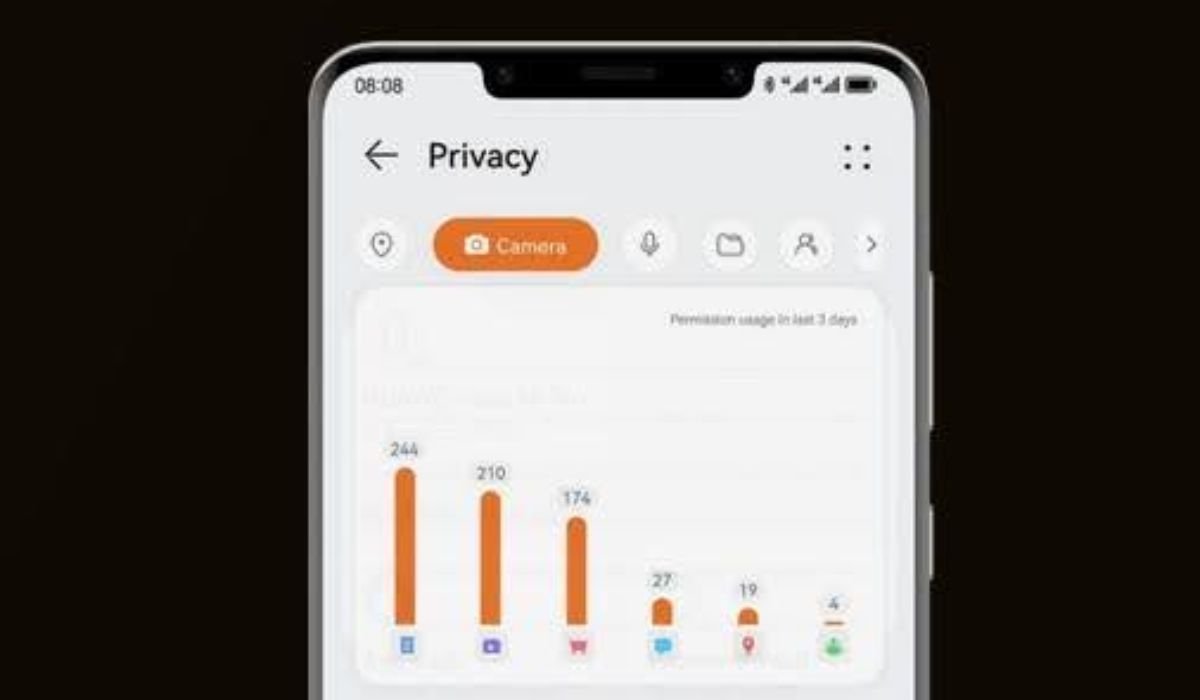Let’s be brutally honest for a second. That envelope arriving? The one from the Home Office? Your stomach probably dropped before you even opened it. Seeing the word “Refused” stamped across your UK visa application feels like a gut punch. Months of planning, hopes pinned on a new job, reuniting with family, or finally starting that degree… suddenly hanging by a thread. It’s devastating.
Here’s a hard truth: Around 15–20% of UK visa applications get refused each year. You are far from alone in this frustrating, bureaucratic maze. But here’s the crucial bit — a refusal isn’t always the final word. Depending on why it was refused, you might still have a fighting chance to turn that “No” into a “Yes” by learning how to appeal UK visa refusal effectively.
But navigating the appeal process? It’s like trying to assemble flat-pack furniture without the instructions — blindfolded. Confusing deadlines, obscure legal jargon (“First-tier Tribunal,” anyone?), and the paralysing fear of making another mistake. Where do you even start? Don’t panic. Take a deep breath. This guide is your roadmap, written by someone who’s been through the trenches (metaphorically speaking — my battles are fought with words and forms, not weapons). We’ll break down how to appeal UK visa refusal step-by-step, in plain English.
The Table You Need Right Now: Administrative Review vs. Tribunal Appeal
| Feature | Administrative Review | Appeal to the First-tier Tribunal (Immigration & Asylum Chamber) |
|---|---|---|
| What it is | A re-check of your application by a different Home Office caseworker for processing errors. | A formal legal challenge heard by an independent judge. |
| Grounds | Only for mistakes in applying the rules (e.g., wrong fee taken, documents ignored, incorrect application of rules). | Wider grounds: Error of law, unfair decision, disproportionate outcome, human rights arguments. |
| Who can use? | Usually only applicants outside the UK applying under specific routes (Points-Based System, Family, etc.). Check your refusal letter! | Depends heavily on the visa type and the grounds of refusal stated in your letter. Often for human rights or protection claims, or certain family visas within the UK. |
| Cost | £80 (as of late 2024). | £140 (appeal fee). May be exempt for financial hardship. |
| Time Limit | Very Strict: Usually 14 calendar days from refusal date. | Strict: Usually 14 calendar days (if inside UK) or 28 calendar days (if outside UK) from refusal date. |
| Process | Paper-based submission. No hearing. | Online submission (MyHMCTS) or paper form. Often involves a hearing where you (or your lawyer) present evidence and arguments. |
| Outcome | Decision overturned, application reconsidered, or refusal maintained. | Appeal allowed (visa granted), appeal dismissed (refusal stands), or decision remitted (sent back to Home Office). |
| Best For… | Clear, undeniable processing errors. | Disputes over facts, application of law, human rights, or where the decision seems fundamentally unfair. |
Step 1: Don’t Panic, Do Scrutinize: The Refusal Letter is Your Bible
That refusal letter isn’t just bad news; it’s your tactical starting point. Put the kettle on, clear your head, and read it. Then read it again. Seriously. Underline, highlight, make notes. The Home Office must tell you:
- Exactly why your application was refused. (e.g., “Failed to provide sufficient evidence of funds,” “Genuineness of relationship not satisfied,” “English language requirement not met”).
- Which specific immigration rules you failed to meet (Paragraph 320(11), anyone?).
- Crucially, whether you have the right to appeal, and what type (Administrative Review OR Appeal to the Tribunal – see table above!).
- The exact deadline for submitting your appeal. Mark this date in bold, red, flashing neon on your calendar. Missing it is usually game over.
My Take: I’ve seen so many people skim this letter in a haze of anger or despair and miss critical details. Don’t. Every sentence matters. If something is unclear? That’s your first red flag to get help.
Step 2: Know Your Weapons: What Kind of Appeal Can You Fight With?
This is where the table above becomes your lifeline. Your refusal letter is the only authority that tells you your available route. Trying to force an Administrative Review when the letter only offers a Tribunal appeal (or vice-versa) is like trying to unlock a door with the wrong key – futile and frustrating.
- Administrative Review (AR): Think of this as an internal quality check. You’re saying: “Hey Home Office, your own caseworker messed up applying your own rules.” Did they overlook a bank statement? Misinterpret a date? Charge the wrong fee? AR is ONLY for these processing blunders. It’s generally faster and cheaper, but its scope is narrow. No new evidence allowed here, folks. You’re just pointing out their mistake based on what was already submitted.
- Appeal to the First-tier Tribunal (FtT): This is the courtroom route (though hearings can sometimes be by video or even paper-based). You’re challenging the merits of the decision itself. You argue the caseworker misinterpreted the law, got the facts wrong, didn’t consider your human rights properly, or made a decision so unreasonable no sensible person would have made it. This is where you get to submit new evidence to strengthen your case. It’s more complex, takes longer (often 6-12 months+), and usually requires stronger legal arguments.
The Million Dollar Question: “Can I appeal?” Your refusal letter holds the answer. No right of appeal listed? Your options shrink dramatically – potentially only Judicial Review (a complex, expensive High Court process) or re-applying. Which brings us to…
Step 3: Seriously, Talk to a Pro. Like, Yesterday. (Seeking Legal Advice)
Look, I get it. Lawyers cost money. The appeal fees themselves (£80 for AR, £140 for Tribunal) sting after the initial visa cost. The temptation to DIY is strong. Resist it. Here’s why getting an experienced immigration solicitor involved early is non-negotiable:
- They Decipher the Gobbledygook: Immigration rules are denser than a fruitcake. A good solicitor translates the legalese in your refusal letter and the relevant rules into actionable steps.
- They Assess Your Actual Chances: Not every refusal is worth appealing. A solicitor will give you a realistic appraisal. Is it a minor fix better suited for a fresh application? Or is there a strong legal argument to fight?
- They Know the System Inside-Out: Deadlines, procedures, tribunal etiquette, what evidence actually sways a judge – this is their daily bread. They know what buttons to push (and which ones to avoid).
- They Build Your Arsenal (Evidence): Knowing what evidence to gather and, crucially, how to present it to directly counter the refusal reasons is an art form. Your heartfelt letter might not cut it; structured, relevant proof does.
- They Handle the Paperwork & Representation: Submitting appeals correctly, drafting compelling legal arguments (Grounds of Appeal), and representing you at a hearing (if needed) significantly boosts your chances. Imagine trying to argue complex legal points yourself in a formal tribunal setting. Nerve-wracking doesn’t begin to cover it.
In my experience: The cost of a good solicitor is often dwarfed by the cost of a failed appeal – wasted fees, more delays, and potentially jeopardising future applications. Think of it as an investment in getting it right. Get recommendations, check credentials (OISC regulated!), and have an initial consultation. Many offer these at reduced rates.
Step 4: Building Your Case Brick by Brick (Gathering Evidence)
This isn’t just about throwing every document you own at the problem. It’s surgical precision. Your evidence must directly, unambiguously address each specific reason given for refusal.
- Target the Weak Spots: If refused for funds: Get updated bank statements covering the exact period required, highlighting the necessary balance. Include a letter from the bank confirming authenticity. Explain any large deposits clearly.
- Gaps in Relationship Proof?: For family visas, gather more photos (dated, with diverse groups/locations), travel tickets proving visits, call logs spanning months, joint commitments (tenancy, bills), affidavits from friends/family.
- English Language Doubt?: Provide the original certificate referenced. If they claim it expired or isn’t SELT-listed, get confirmation from the test provider or proof it was valid/accepted at the time of application.
- “Genuineness” Concerns?: This is often the murkiest. Detailed cover letters explaining your plans, job offers, property ties back home, evidence of ongoing studies – anything that proves your intent aligns with the visa type.
- New Evidence? (For Tribunal ONLY): Found that missing document? Got a crucial updated letter? This is your chance! But ensure it’s directly relevant and counters the refusal point. Don’t just add fluff.
Pro Tip: Organise everything chronologically and label clearly. Create an index. Make it easy for the reviewer or judge to see exactly how your evidence demolishes each refusal reason. Sloppy evidence packs scream “DIY disaster.”
Step 5: Pulling the Trigger: Submitting Your Appeal
Time to launch your counter-offensive. Hitting the deadline is ABSOLUTELY PARAMOUNT.
- Administrative Review: Usually involves completing a specific form (detailed in your refusal letter) and paying the £80 fee. Submission is typically via post to the address given. Double-check! Keep proof of postage!
- Tribunal Appeal (FtT): This is mostly done online via the MyHMCTS portal. You’ll need to create an account. The process involves:
- Completing the appeal form (IAFT-5 or IAFT-6 depending on location).
- Paying the £140 fee (unless exempt).
- Uploading your Grounds of Appeal (a document explaining why the decision was wrong, point-by-point – this is where legal help shines).
- Uploading ALL your supporting evidence in one go (or very promptly afterwards).
- Paper Forms: Sometimes required (e.g., certain detention cases). If so, get the correct form, send it recorded delivery, and keep copies of everything.
Human Reality Check: The MyHMCTS portal isn’t winning any user experience awards. Allow plenty of time. Don’t wait until 11:58 PM on deadline day! Tech glitches happen.
Step 6: The Waiting Game & The Hearing (If Called)
After submission:
- Administrative Review: You’ll usually get a decision within 28 days, sometimes longer. No hearing. It’s all on paper.
- Tribunal Appeal: Buckle up. This takes time.
- Acknowledgment: You’ll get confirmation your appeal is lodged.
- The Home Office Responds: They get a copy of your appeal and must submit their own bundle defending their decision (“Respondent’s Bundle”).
- Case Management: Directions might be set (e.g., deadlines for more evidence).
- The Hearing Notice: You’ll be told if a hearing is required (many are, but some can be decided on papers). You’ll get the date, time (often only a few weeks notice!), and location (or instructions for a video hearing).
- The Hearing Itself: If you have a solicitor, they will handle this. If not… well, it’s incredibly daunting. You (and any witnesses) present your case. A Home Office Presenting Officer argues why the refusal was correct. The judge asks questions. It’s formal, but less scary than TV courtrooms. Be prepared, be honest, be concise. Dress smartly.
- The Wait (Again): The judge rarely decides instantly. You’ll get the written decision later.
Anecdote Time: I know someone who represented themselves. Brilliant case, terrible presentation. Rambled, got flustered, didn’t address the judge properly. Their strong case flopped. Don’t be that person. Get representation for the hearing if at all possible.
Step 7: The Verdict & What Comes Next
Finally, the decision arrives:
- Allowed: Your appeal succeeded! The Home Office will be instructed to grant the visa (or reconsider the application properly). Celebrate… but stay on top of any follow-up they require.
- Dismissed: Your appeal failed. The refusal stands. This is crushing. Now you need to analyze why.
- Fresh Application? Is the refusal reason something you can actually fix with new, solid evidence? If so, re-applying might be the best (and often fastest) route, especially if your appeal rights were limited. Address the original refusal reasons head-on.
- Appeal Further? You might have the right to appeal to the Upper Tribunal (UT). This is ONLY on a point of law – meaning the FtT judge made a significant legal error in how they handled your case. It’s highly technical. You absolutely need a solicitor for this.
- Judicial Review (JR): The nuclear option, typically only when there’s no right of appeal and you believe the Home Office acted illegally, irrationally, or unfairly in a way that breached public law principles. It’s complex, expensive (often £10k+), and permission is hard to get. Explore only with top-tier legal advice.
The Emotional Toll: This whole process is stressful. Allow yourself to feel the frustration and disappointment. Lean on support networks. But also, try to detach emotionally from the bureaucracy. Focus on the practical next step, whatever that may be.
FAQs:
- “How long does a UK visa appeal take?”
- Administrative Review: Aim for 28 days, but often takes 6-12 weeks. Don’t hold your breath.
- Tribunal Appeal: Buckle up. 6 months is optimistic; 9-12 months is common, sometimes longer. Complex cases or backlogs push it further. The hearing notice itself might only come through months after you appeal.
- “Can I stay in the UK while my appeal is pending?”
This depends entirely on your original visa status and when you appealed. If you had valid leave when you applied, and you appeal from within the UK before your leave expires, you generally have the right to stay (“Section 3C Leave”) until the appeal is finally decided. Do NOT assume this applies – check your specific situation with a solicitor immediately. If you were applying from outside the UK, you generally wait abroad. - “How much does appealing a UK visa refusal cost?”
- Fees: AR = £80. Tribunal Appeal = £140 (potentially waivable).
- Solicitor Costs: Vary wildly (£1000 – £5000+ for Tribunal, depending on complexity). AR might be £500-£1500. Initial consults often £50-£150. Get quotes upfront!
- “What are my chances of winning a UK visa appeal?”
There’s no magic number. It hinges entirely on:- The strength of the original refusal reasons.
- Having a valid legal right to appeal that specific decision.
- The quality of your new evidence (for Tribunal).
- The strength of your legal arguments.
- Competent representation. Generally, Tribunal appeals with good evidence and a lawyer have better odds than ARs, which often just correct simple errors. Don’t expect a slam dunk.
- “Can I submit a new application while my appeal is ongoing?”
Generally, no. Submitting a new application usually withdraws your existing appeal. It’s usually one or the other. Discuss this critical strategic decision with your solicitor – sometimes withdrawing a weak appeal to submit a stronger fresh application is the right move. - “What if I missed the appeal deadline?”
It’s dire. Deadlines are incredibly strict. You might apply for an “out of time” appeal extension, but you must prove you had a very good reason (like serious hospitalisation) and acted promptly once able. Success is rare. Don’t miss the deadline. - “Is the Home Office decision always right?”
Snort. In my humble opinion? Absolutely not. Mistakes happen. Caseworkers are overloaded. Rules are complex and sometimes misinterpreted. That’s why the appeal system exists. But proving they were wrong requires evidence and solid argument, not just frustration.
Wrapping It Up: Resilience is Your Secret Weapon
Appealing a UK visa refusal is rarely easy, fast, or cheap. It’s a test of patience, organisation, and often, finances. But for many, it’s the only path left to salvage their UK plans.
The absolute golden rules?
- Decode that refusal letter like it holds the secrets of the universe.
- Know your appeal route (AR or Tribunal) – it dictates your entire strategy.
- Get expert legal advice early. Seriously. It’s not a luxury; it’s often essential armour.
- Gather targeted, overwhelming evidence that surgically dismantles the refusal reasons.
- Hit. That. Deadline. Religiously.
- Prepare for the long haul, especially with a Tribunal appeal. Manage your expectations.
Seeing that refusal letter feels like the end. But for many, it’s just an infuriating, bureaucratic detour. Arm yourself with knowledge, get the right help, and fight strategically. Your UK dream might just need a second act.
Have you been through the visa appeal wringer? What was your biggest hurdle? Share your story (anonymously if needed) below – sometimes knowing others have navigated it helps more than any guide. Good luck.
YOU MAY ALSO LIKE: Beyond the Usual: Explore West Africa with a Burkina Faso Visa for Indian Travelers











